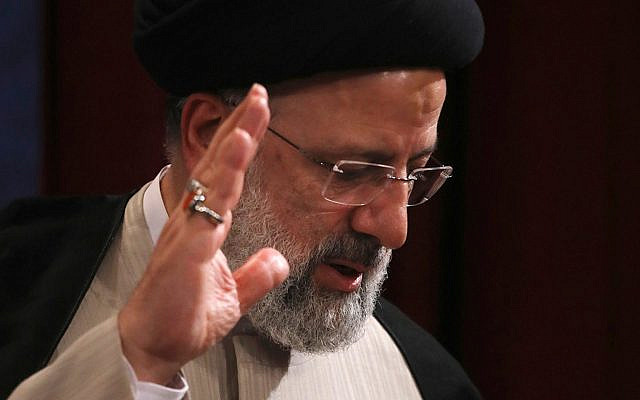Iranians Honor Dead Protesters, Amid Vows to Fight On
Published on: 2019-12-26
Forty days after the first protesters were killed in Iran’s worst unrest in decades, Iranians took their grievances against the government to cemeteries on Thursday, marking both the end of the traditional mourning period and their determination not to back down.
Over four days of protests in November, security forces shot and killed up to 450 people, human rights organizations estimate, and in the weeks leading up to Thursday, some of their survivors called on the public to join them in yet another act of defiance: at the graveyards of their loved ones.
Iran’s leadership was not having it.
Even before the end of the mourning period, the authorities began cracking down, beefing up security in cities across the country, renewing their disruption of the internet and conducting waves of pre-emptive arrests.
Then on Thursday, uniformed security forces and plainclothes militia deployed en masse across the country to keep people off the streets.
They lined up on foot in riot gear at squares, and paraded through residential and commercial neighborhoods in platoons of motorcycles and armored vehicles carrying the Iranian flag and waving weapons, video shared on social media showed.
“Tehran is under total calm and security,” Tehran’s chief of police, Brig. Gen. Hossein Rahimi, declared Thursday. “Our enemies are constantly trying to instigate chaos and instability, but they will be met with the security forces’ iron fist.”
Accounts and videos that emerged from the country despite the information clampdown suggested, however, that Iranian protesters made their presence known, if generally in small groups, at cemeteries and in the streets of several cities, including Karaj, Isfahan, Mashhad, Behbahan, Malard, Najafabad, Yazdan Shahr and Shahriar. There were unconfirmed reports of 50 arrests.
They gathered to honor the dead, and as they did so, some chanted slogans against Iran’s supreme leader, Ayatollah Ali Khamenei, calling him a “murderer” and a “criminal.”
“We didn’t give casualties to praise a murderous leader,” chanted one group of men and women who gathered at the grave of Pouya Bakhtiari, a 27-year-old engineer who was shot and killed in November and has become one of the main faces of the uprising.
Mr. Bakhtiari’s parents were detained this week after refusing, under pressure from the government, to call off their invitation for the public to join their son’s memorial service.
On Thursday, a crowd managed to gather briefly at Mr. Bakhtiari’s grave and lay flowers, candles and a handwritten sign that read, “Lost his life for bread, employment and freedom.”
Witnesses reported that security forces ordered family members to leave, chased supporters away, arrested several people and cordoned off Mr. Bakhtiari’s grave. They blocked cars from entering the cemetery and positioned water cannons and armored cars around the grave site, according to reports on social media.
“I was counting the days to go to my grandson’s grave and pray,” Mr. Bakhtiari’s grandmother said in a video message on Thursday to BBC Persian television. “I begged a lot and I cried, and I said, ‘Please allow me to go for one minute to pray.’ But they didn’t let me.”
Word of the Bakhtiari family detentions drew condemnation from the American secretary of state, Mike Pompeo. “The U.S. strongly denounces the arrest of Pouya Bakhtiari’s parents, and calls for their immediate release,” he said on Twitter.
The protests, which began on Nov. 15, broke out hours after the government raised gasoline prices by 200 percent. Already struggling under the burden of economic sanctions imposed by the United States, Iranians took to the streets in what became the broadest unrest seen in the country in decades.
The government’s response was unsparing.
As cities across Iran were convulsed in the days after the gas-price increase, some 300 to 450 people are believed to have been killed. At least 2,000 others were reported injured, and 7,000 detained, according to international rights organizations, opposition groups and local journalists.
Iran has dismissed those figures as exaggerated, but it has not released its own, despite calls for transparency by lawmakers from across the political spectrum.
On Thursday, one video posted on social media showed a platoon of armed forces marching in the street chanting “Haydar,” a rallying cry for war, but a man narrating the video sounded scornful.
“It’s because they are afraid,” he said.
Mr. Khamenei initially denounced the protesters as rioters, thugs, monarchists and enemy agents, but when public fury mounted over the heavy-handed crackdown, he called for “Islamic mercy” for people who had simply demonstrated against the price increase. President Hassan Rouhani said a government committee would investigate the unrest and propose compensation for Iranians who lost loved ones or suffered financial loss.
But Iran watchers believe the cycle of protest and crackdown may persist, given the anger among many Iranians over the economy. The United States reimposed the sanctions after the Trump administration pulled out of a multination deal intended to thwart Iran’s nuclear program.
On Thursday, supporters and opponents of the regime alike reviewed the events of the day and declared victory, at least of sorts.
Posting on social media, government supporters took satisfaction in the failure of protesters to assemble crowds as large as those in November. Opponents said the authorities’ heavy deployment of force showed that they feared their own citizens.
“Dec. 26 is the latest proof that regime change is delusional and a farce,” Morteza Avini, a conservative filmmaker, wrote on Twitter.
Kambiz Hosseini, an expatriate political satirist, offered a different lesson to the government.
“These days will end,” he wrote. “The people will take the country back, and you will be begging for forgiveness.”











